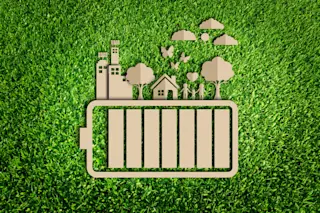
In cold-weather cities in the U.S., slush, snow and wind aren’t the only inconveniences to contend with when the temperature drops; there’s also this small matter of exploding manholes. Public works officials in New York City have fielded thousands of blown manhole reports throughout late 2014 and into this year, and crews in Indianapolis, weeks before hosting the Final Four, just installed locking manhole covers after two explosions were reported in highly trafficked areas. Similar stories are popping up — pun intended — around the country. But at the Electric Power Research Institute’s (EPRI) sprawling lab in Lenox, Massachusetts, a team of scientists, engineers and technicians is working hard to prevent a 50-pound manhole cover from ever posing a threat to you.
Winter Booms
So, what is the link between cold weather and exploding manholes? Cities like Chicago and New York City have gargantuan electrical infrastructures that are triple, sometimes quadruple, engineered to prevent an isolated malfunction from cutting off electricity to the rest of the city. When something goes wrong with the industrial wiring under the street, the cables are designed to burn off, much like a fuse. When the wires burn, they release a cocktail of gases as the insulation around them melts. In older wires, this mixture of gases is highly flammable (though these wires are being phased out as time and funds permit). These gases build up within the tunnels of a sewer system until a critical mass is reached. Then, all it takes is an exposed electrical wire to release an errant spark, and boom: And salt from the roads in cold places makes this more likely. The salty meltwater seeps into underground electrical cable systems and eats away the protective insulation around electrical cords. The salty water also provides a path to the ground for electricity coursing through the exposed wires. As more cords bare their shocking innards, there’s a higher chance that they’ll spark and cause an explosion. “When you have a winter like we’ve had you’ll see a spike in these events,” says Matthew Olearczyk, a senior program manager at EPRI.
Keeping the Lid On
All this is understood thanks to lots of detonations the EPRI scientists have set off over the years. Their Lenox lab has an outdoor "Manhole Event Area" that features two full-scale electrical conduit systems that are clones of what’s underground in New York City and San Francisco. Here, researchers can recreate real-world scenarios like flushing salt water down a sewer grate, pumping in gas, and, of course, blowing things up — in a controlled, scientific manner. https://youtu.be/zGF48k8cP90?t=4m13s Most of their early manhole explosion research focused on the conditions that lead to an explosion, which turns out to be a certain mixture of carbon monoxide, methane, ethylene and acetylene. Just 10-12 percent of this four-gas mixture by volume could shoot a 10-ton slab into the air if the spark is provided, they discovered.
Safer Sewers
The lab's current research focuses on preventing explosions. Researchers are testing sensors to monitor the gases that build up underground. If crews can clear the gas soon enough, they can avert disaster. Another approach is installing high-tech new covers. Lenox engineers have tested a heavy-duty latching system — like those being installed in Indianapolis — that somewhat resembles a car piston. When an explosion occurs, manholes equipped with the latching systems pop up just high enough to relieve the pressure beneath. Sure, there’s still plenty of flames and smoke, but the heavy cover stays put. “We put a lot of time and understanding into the nature and cause of these events, but we’re trying to figure out how to mitigate the events from happening in the first place. We still haven’t completed our number one goal,” Olearczyk said. In a world that’s filled with endless unknown dangers, take comfort knowing scientists are hard at work removing one of those dangers: flying manhole covers.













